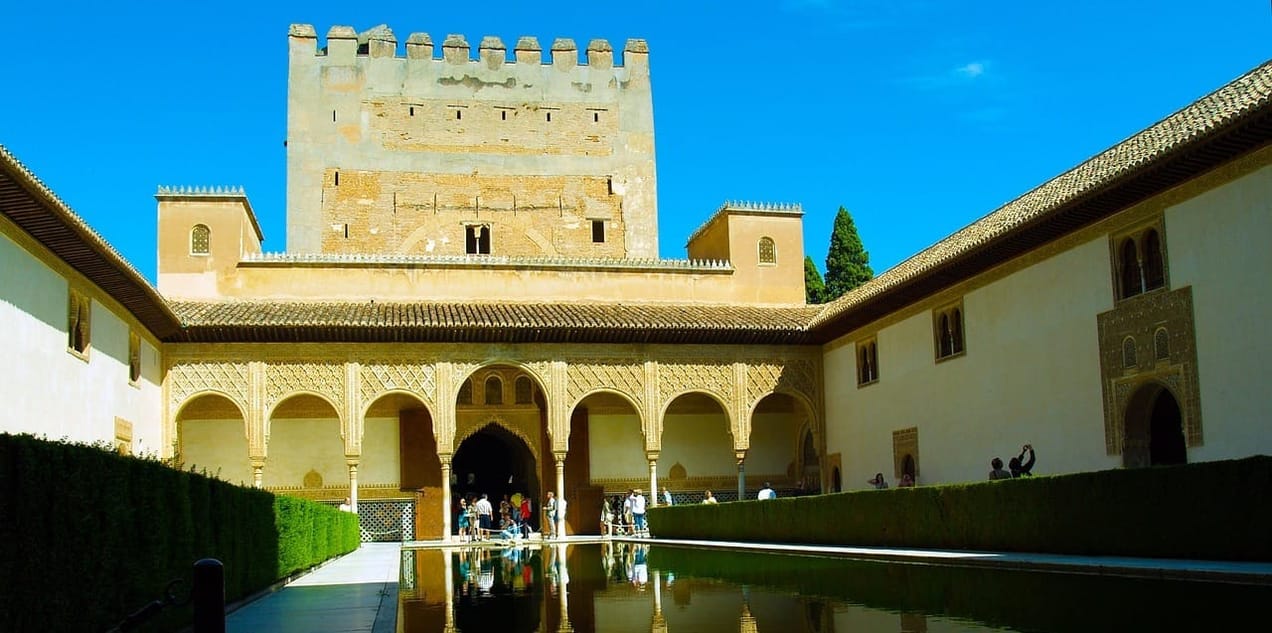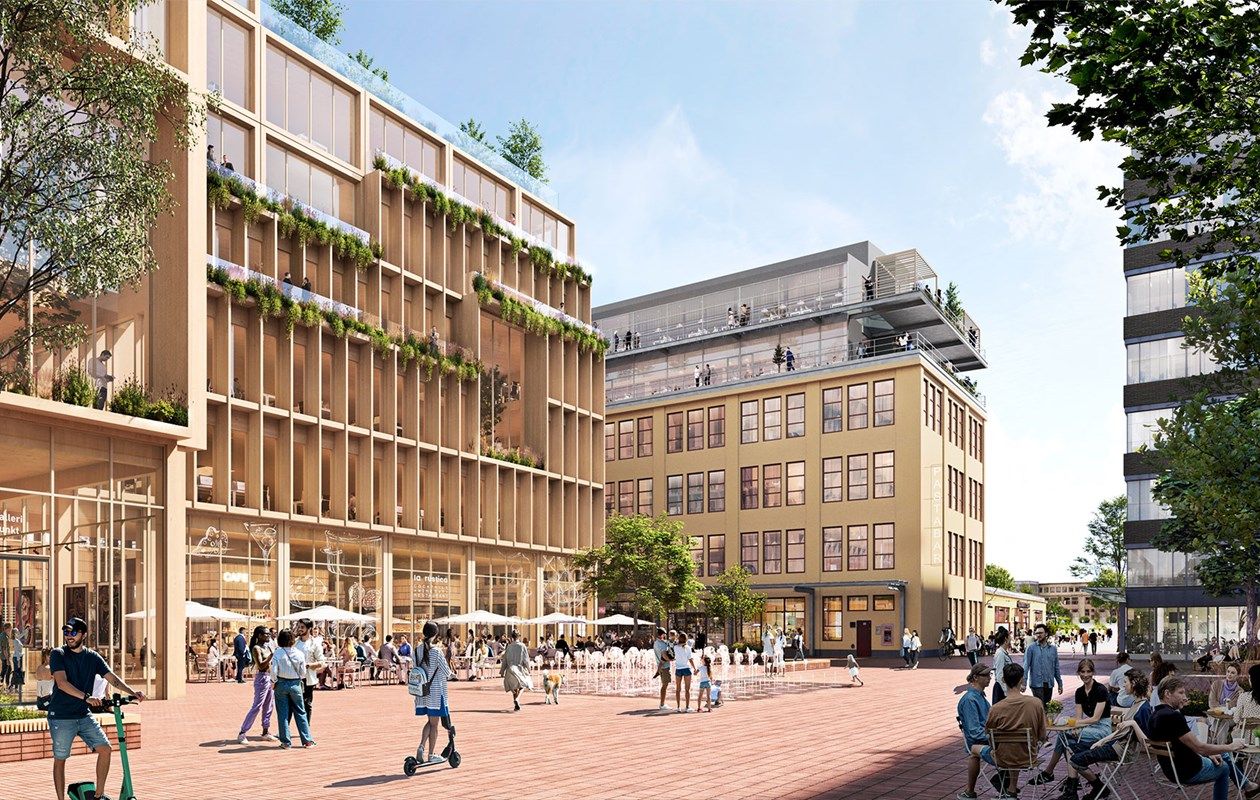
Sweden's wooden city
Wood has been used for centuries in construction but when managed appropriately could become key to making the built environment more sustainable.
Summary: Stockholm real estate developer Atrium Ljungberg has unveiled plans to expand the '5-minute city' neighbourhood of Sickla with the world's largest wood-based urban construction project.
Why this is important: Wooden construction could be an important decarbonisation and health and wellbeing solution in certain areas and for certain constructions. Sustainable management is key.
The big theme: The built environment, including residential and commercial buildings, communal areas such as parks and supporting infrastructure such as energy networks and water supply, generates almost 40% of energy-related GHG emissions and it consumes 40% of global raw materials. So, it's not surprising that it's a target for a lot of new regulation - aimed at making our buildings more energy efficient and improving their sustainability. The good news is that there are many financially viable tools and techniques we can use to deliver on this. But as with all of the transitions, we need to avoid green washing, by ensuring that the environmental and societal gains (health, well-being and DEI) are real, and that we find ways of actually delivering the financial benefits we are seeking.

The details
Summary of an article in arch daily:
- Stockholm real estate developer Atrium Ljungberg has unveiled plans for the 250,000 sq m Stockholm Wood City, the world's largest wood-based urban construction project, with construction set to begin in 2025 and the first buildings ready for completion in 2027. The Sickla neighbourhood in southern Stockholm will include 7,000 business spaces and 2,000 houses, with the focus on self-produced, stored and shared energy.
- As well as reducing CO2 emissions, the development has a broader sustainability remit. Atrium Ljungberg will invest in resource-efficient construction techniques and circular material flows. With the abundant business space, the development also aims to reduce commute times for locals which has both wellbeing and emissions benefits.
Why this is important
- One part of the solution to some of our hard to decarbonise sectors (cement and steel), could be to use different materials in construction. Timber is a material we have used for thousands of years, and technological improvements, such as glulam (glued and laminated) beams, mean that it can be used as a structural element, allowing the construction of taller timber commercial and office buildings. There are a number of examples of large buildings that have been successfully developed. Timber use in low rise residential buildings is already increasing. Its advantages are largely about speed of construction and hence cost. It has been estimated that using this approach can take 10 weeks off the normal 26 week build time. Being able to assemble the timber components in a controlled factory environment and then truck them to site for quick erection is a major advantage. It can also be used in taller structures too. The 87 metre-high Ascent MKE tower in Milwaukee is one example:
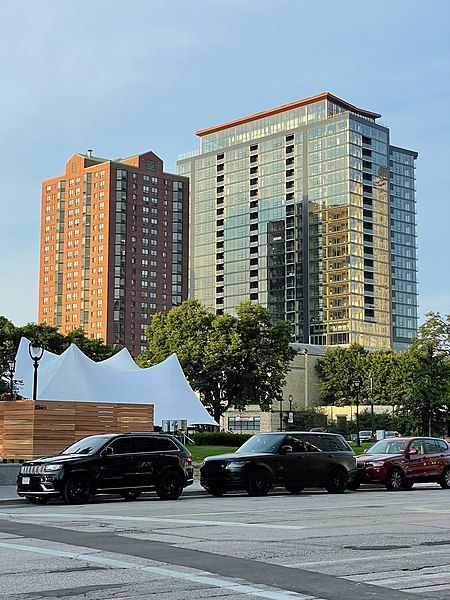
- Another more recent example is Gaia in Singapore, Nanyang Technological University's six-storey building which houses a 190-seat auditorium, 12 lecture theatres and 13 seminar rooms. It is the largest wooden building in Asia:
We discuss other examples in this blog 👇🏾

- So timber can be a cost effective, lower carbon and more sustainable solution. We can sometimes carry this narrative too far - not all timber in buildings is good. The provenance of materials is key. The carbon footprint of mass timber is impacted by how and from where the wood was sourced and transported, and what happens to it at the end of its useful life. A study from the Yale School of Forestry & Environmental Studies, supports the view that "throughout its entire life, a large building made mostly from wood would have a carbon footprint up to a third smaller than a comparable one made from steel or concrete." In many cases this is correct.
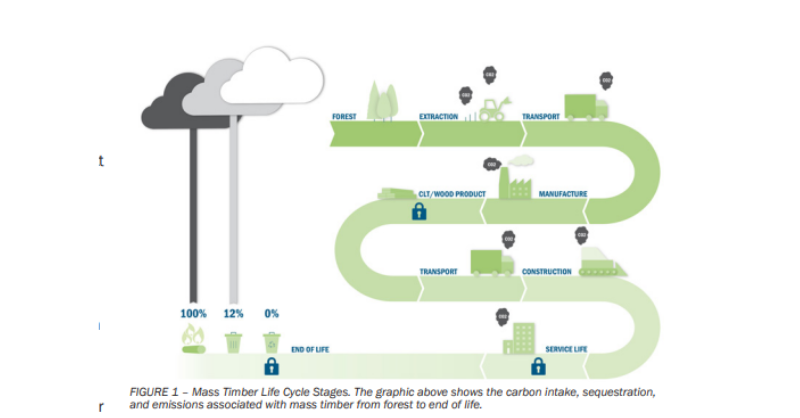
- In principle, mass timber can use smaller and lower-quality trees than traditional solid timber construction. As such it creates a commercial incentive for harvesting and utilising these trees in a way which is sustainable. Why can this make a difference? Traditionally, in order to manage fires, forest stewards often strip trees, and implement controlled burns, so as to thin out the stock and preserve the more mature trees traditionally used in timber products. This meant that the carbon sequestered by smaller trees would be re-released into the atmosphere as they were burned. However, using this "lower quality timber" for mass beams and other engineered timber products can create a positive sustainability outcome. Of course, you need to be sure that this is the case, that mature trees are not being used to produce mass timber products. At the other end of the life cycle where operational usefulness has come to an end, if the wood used in a building's construction ends up in a landfill, it is likely to be incinerated or left to decompose, with its sequestered carbon released back into the atmosphere – cancelling out the carbon benefits. There are alternatives such as reuse in new construction or retrofitting 👇🏾
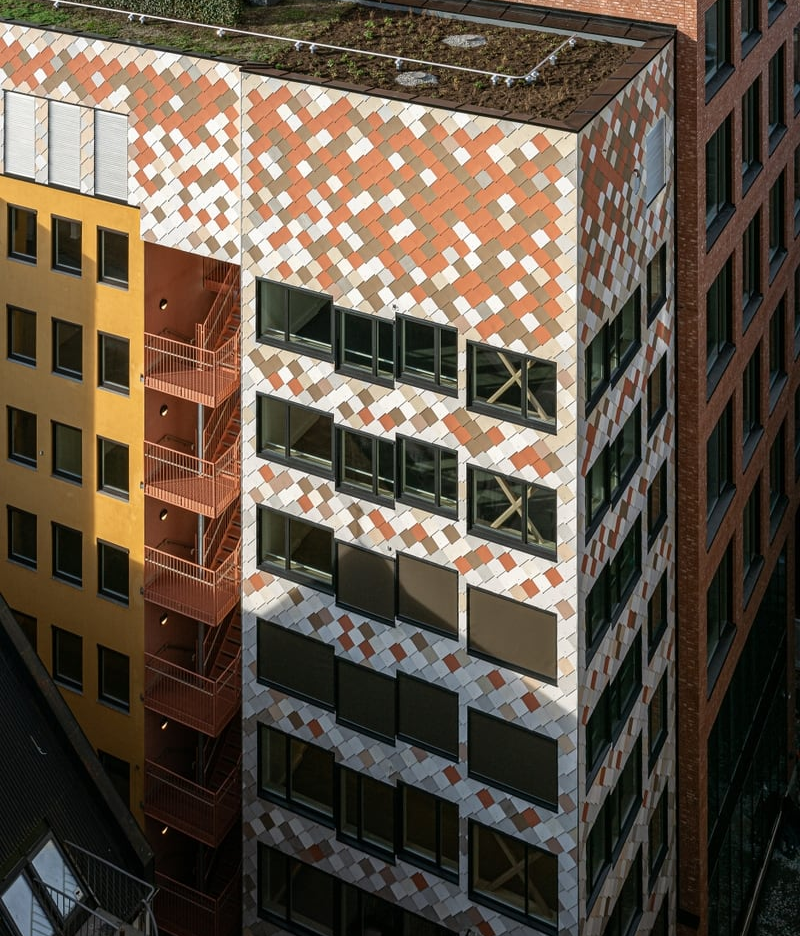
- Just over two-thirds of Sweden is covered by forest. So there is an abundant source of materials and, as we introduced above, there could be the possibility of reusing materials - the developer mentions the use of 'circular flows'. There are examples where truly sustainable living can exist on an individual development scale. There is a project under development in the UK in Norfolk at Ashwicken Lake, an 80 hectare former quarry. The £35 million private sector investment aims to create a self-sufficient eco-wellness resort with leisure and accommodation (154 floating and lakeside lodges). The broader site includes forestry providing both building materials and biomass for energy generation with the resulting biochar feeding back into the land. Ashwicken is in the pre-planning stage so hopefully in the next 12 months we start to see the reality of this local example of how to generate sustainable environmental, social and economic returns 👇🏾

- Sickla where the new development is being built at an expected cost of SEK12 billion (US$1.4 billion) was originally an industrial area that has been transformed into a city neighbourhood over the past 20 years. It is home to roughly 8,000 people and 400 businesses and with this next phase it will add 7,000 workplaces and 2,000 residential homes. It has been dubbed a '5-minute city' meaning that everything you need is just a 5-minute walk away. The concept of walkable cities - often referred to as the marginally less ambitious '15-minute' or '20-minute' city concept is designed to improve sustainability on a number of levels. Much of the focus on decarbonisation efforts in transportation has been on reducing fossil fuel reliance of the motor. However, reducing the requirement for motorised transportation in the first place would reduce emissions too and clearly one way to do that would be to reduce the distances required to travel. 'The Loop' in Dubai is one example of this concept 👇🏾

- The development in Sickla is an exciting one cutting across a number of themes - decarbonising the built environment through the use of timber, as well as potentially improving health and wellbeing. We shall be watching this one.
Something a little more bespoke?
Get in touch if there is a particular topic you would like us to write on. Just for you.
Contact us
Please read: important legal stuff.

